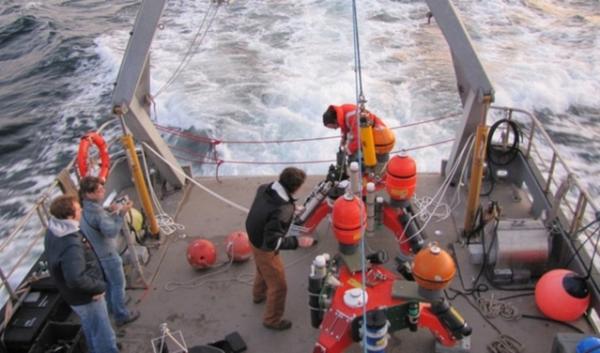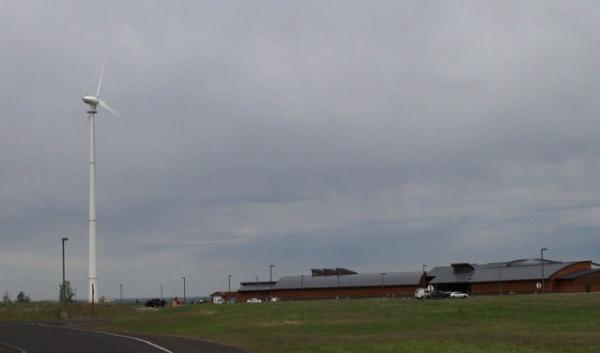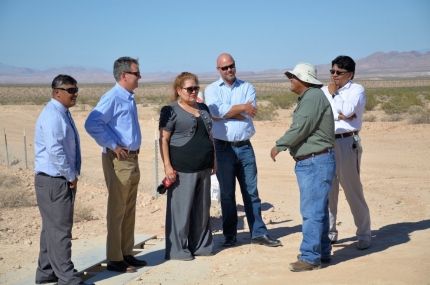Indian Country Today Media Network
Chilkoot Indian Association, Menominee Tribal Enterprises win grants to support clean, renewable energy projects, help reduce the risk of wildfire and provide economic opportunities to their rural communities
U.S. Forest Service Chief Tom Tidwell today announced the award of nearly $2.5 million in grants to 10 small businesses and community groups for wood-to-energy projects that will help expand regional economies and create new jobs.
“These grants help grow new jobs, support clean energy production and improve our local environments, especially in reducing fire threats,” said Tidwell. “Communities from Massachusetts to Alaska will benefit from the program this year.”
The projects will use woody material removed from forests during projects such as wildfire prevention and beetle-killed trees, and process woody biomass in bioenergy facilities to produce green energy for heating and electricity. The awardees will use funds from the Woody Biomass Utilization Grant program to further the planning of such facilities by funding the engineering services necessary for final design, permitting and cost analysis.
In fiscal year 2012, 20 biomass grant awards from the Woody Biomass Utilization Grant program totaling approximately $3 million were made to small business and community groups across the country. This $3 million investment leveraged more than $400 million of rural development grants and loan guarantees for woody biomass facilities. The program has contributed to the treatment of more than 500,000 acres and removed and used nearly 5 million green tons of biomass at an average cost of just $66 per acre. Grantees also reported a combined 1,470 jobs created or retained as a result of the grant awards.
The program helps applicants complete the necessary design work needed to secure public or private investment for construction, and has been in effect since 2005. During this time period, more than 150 grants have been awarded to small businesses, non-profits, tribes and local state agencies to improve forest health, while creating jobs, green energy and healthy communities.
Out of the 17 applications received, the Forest Service selected 10 small businesses and community groups as grant recipients for these awards. According to the requirements, all 10 recipients provided at least 20 percent of the total project cost. Non-federal matching funds total nearly $6.3 million.
The following are the 2013 woody biomass utilization grantees:
2013 Woody Biomass Utilization Grantees
Chilkoot Indian Association, Haines, Alaska $35,000
Ketchikan Gateway Borough, Ketchikan, Alaska copy43,363
Sierra Institute for Community and Environment, Plumas County, Calif. $250,000
Calaveras Healthy Impact Products Solution, Wilseyville, Calif. copy84,405
Narragansett Regional School District, Baldwinville, Mass. $250,000
Stoltze Land and Lumber Company, Columbia Falls, Mont. $210,988
New Generation Biomass, Alamogordo, N.M. $250,000
Wisewood, Inc., Harney County, Ore. $250,000
Oregon Military Department, Salem, Ore. $250,000
Menominee Tribal Enterprises, Neopit, Wis. $250,000
The mission of the U.S. Forest Service is to sustain the health, diversity and productivity of the nation’s forests and grasslands to meet the needs of present and future generations. The agency manages 193 million acres of public land, provides assistance to state and private landowners, and maintains the largest forestry research organization in the world. Public lands the Forest Service manages contribute more than copy3 billion to the economy each year through visitor spending alone. Those same lands provide 20 percent of the nation’s clean water supply, a value estimated at $7.2 billion per year. The agency has either a direct or indirect role in stewardship of about 80 percent of the 850 million forested acres within the U.S., of which 100 million acres are urban forests where most Americans live.
Read more at https://indiancountrytodaymedianetwork.com/2013/06/20/us-forest-service-awards-nearly-25m-renewable-energy-projects-150018














